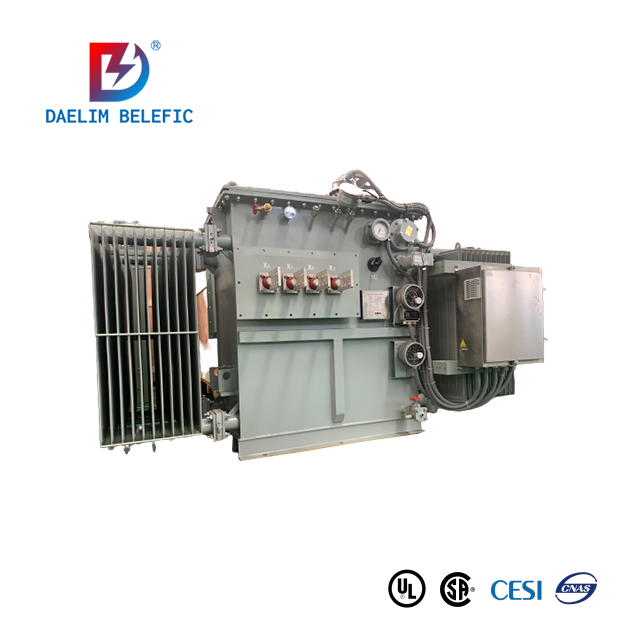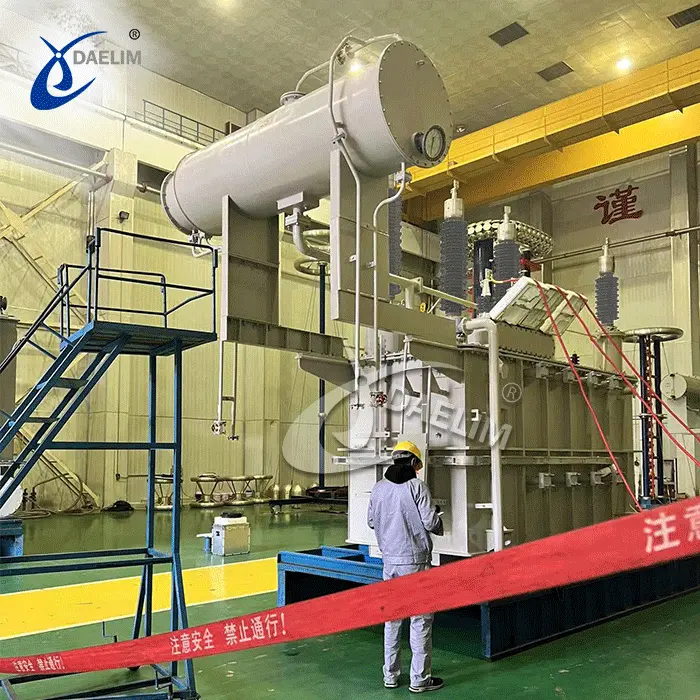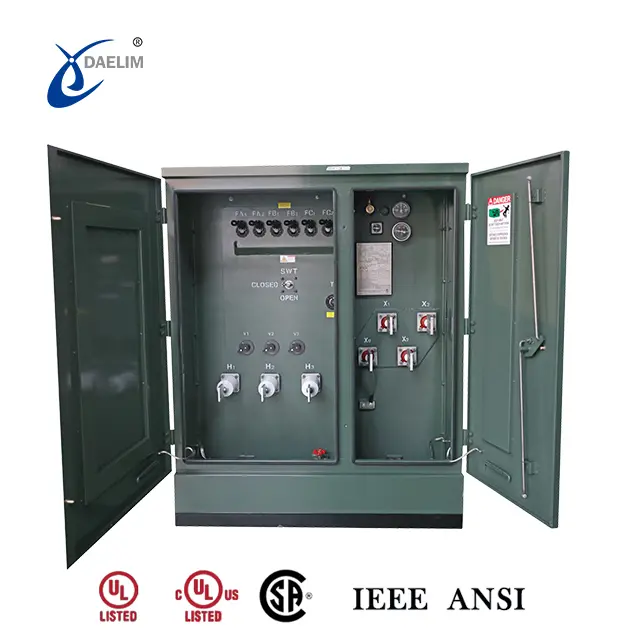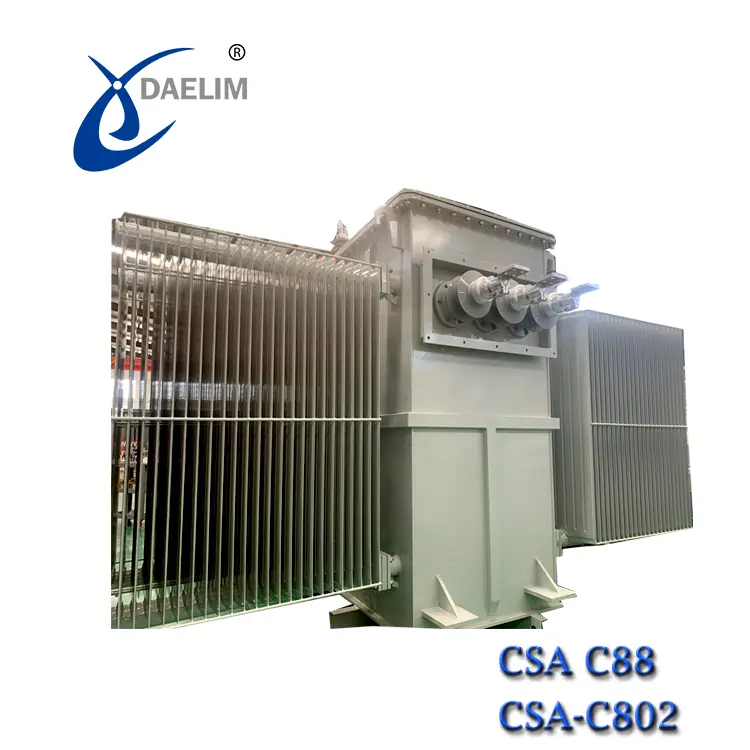Daelim Transformers Solutions For Energy Storage
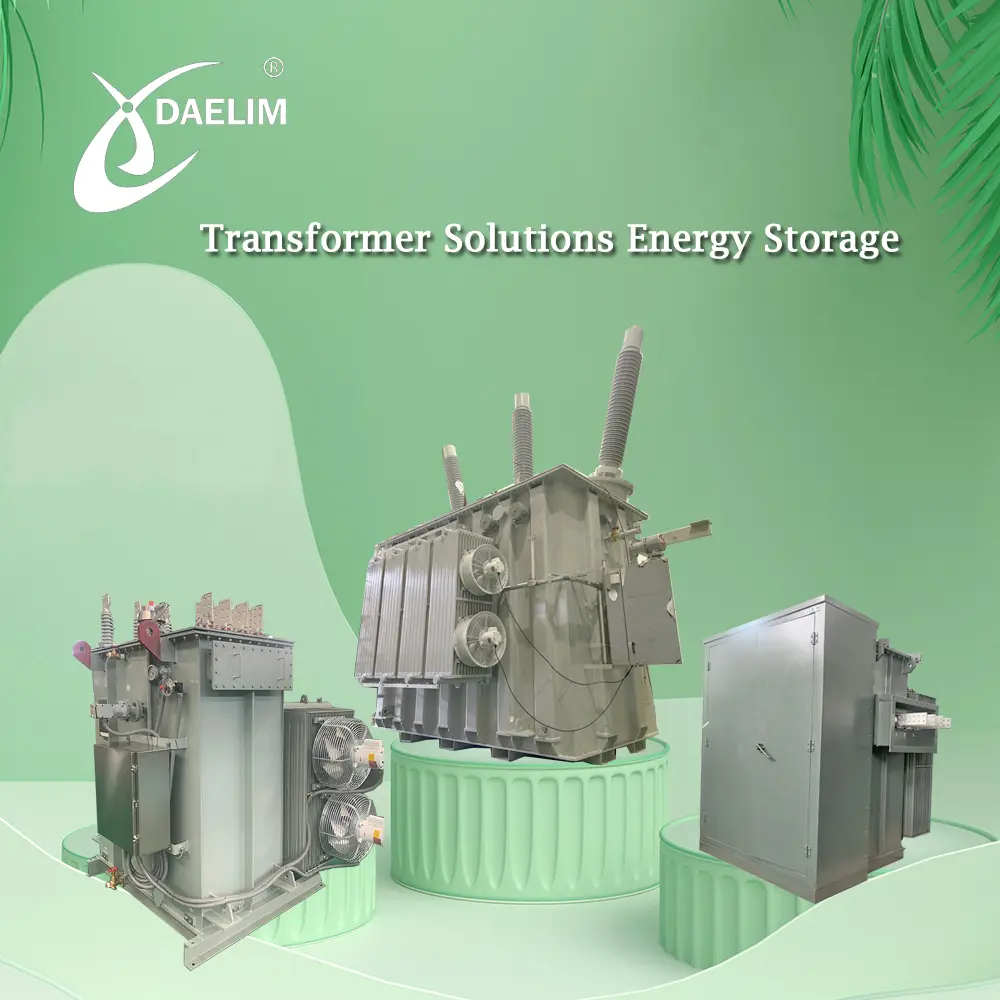
Daelim's transformer solutions can also play a significant role in integrating energy storage systems with the existing power grid. This is critical in achieving a seamless and efficient transition to renewable energy sources. By ensuring the seamless integration of energy storage systems into the grid, Daelim can help optimize the performance of these systems, enabling more efficient power distribution and delivering clean energy to more people.
Contact Daelim TransformerFurthermore, Daelim's transformer solutions can help reduce overall energy costs by enabling energy storage to be utilized during peak demand periods, which then helps balance energy loads and reduces the need for additional generating capacity. Flexible transformer solutions, combined with energy storage, can offer a dependable and consistent energy supply that is crucial for sustainable and reasonably-priced energy.
In conclusion, Daelim's expertise in transformer solutions can assist in the development of innovative and reliable energy storage solutions. By leveraging Daelim's experience, clients can ensure that their energy storage projects are optimized and meet required performance standards.
Daelim Transformers Solutions For Energy Storage
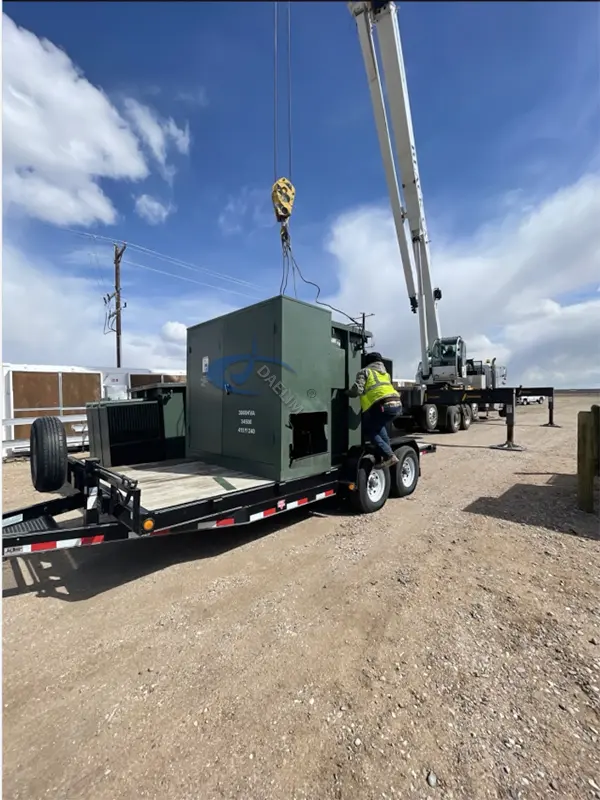
DAELIM Project-2000/2500kVA Three-phase pad-mounted transformer
Site:Dubreuilville, Ontario
Specification:
Arrangement / Detail Drawing Required
Installation and Operating Manual Required
Standards: CSA C227.4 CSA C802, IEEE C57
Ambient Temperature -40⁰ C < T < 35 ⁰C
Environmental Conditions (Wet, Dry, Clean, Dusty)
Suitable for cold start and full loading at -40C Required
System Frequency 60hz
Number of Windings 2
Primary 13.8KV
Secondary 600V
Impedance 5.75%
Contact Daelim TransformerGuaranteed Audible Sound Level at Rated Voltage Less than 64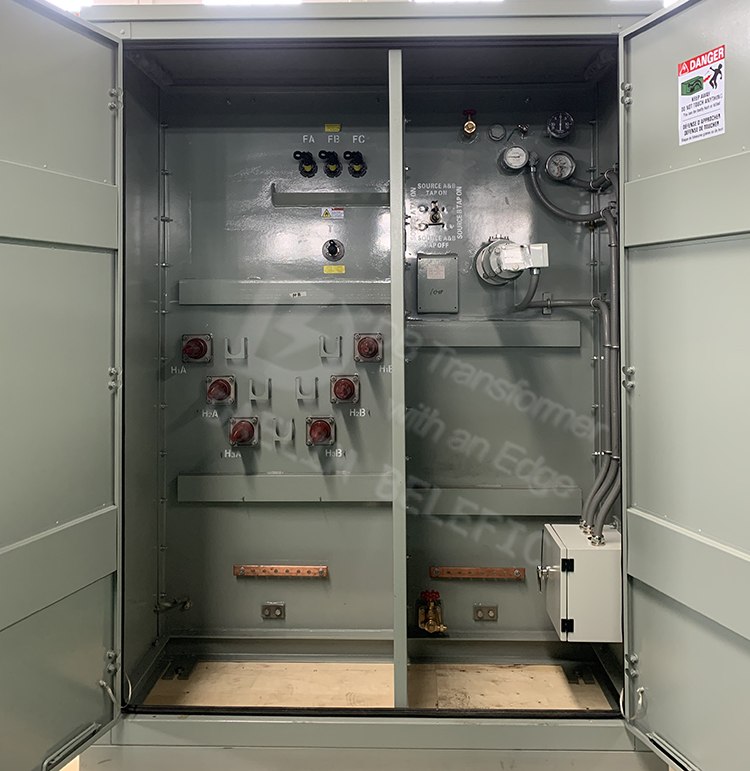
Lifting Hooks Required
Provision for Jacking and Rolling of Tank Required
Optional Sub Base (ISO 668 1D Type) Provide Optional Price and Details
Oil Type Natural Ester
Manufacturer Trade Name MIDEL EN 1204
Optional Pricing for Mineral Oil Voltesso 35 or Technical Equivalent
Transformer Ships Fully Filled Vendor to Specify
Galvanized, Unpainted Radiators Required
Removable Radiators, and c/w Lockable Valves Required
Cooling Fans Required
Winding Material Copper
Configuration Dyn1
Primary Delta
Secondary Wye
Temperature Rise 65
Basic Impulse Level
Primary 95
Secondary 60
External Core Ground Bushing Required
Neutral End Insulation same as Phase End Required
Tap Changer Type Off-Load Taps
Tap Changer Steps +/- 2.5, 5.0%
Construction / Type NEMA spade type
Terminations / Bushings per Phase 1
Terminations / Bushings grouped by Phase or Cable N/A
Voltage Class 15
Current Rating 200
Cable Entry Bottom
Anticipated Cable Qty 1 - #0, 3/C 15kV Cable
Neutral Termination N/A (Delta)
Low Voltage Termination
Construction / Type NEMA spade type
Terminations / Bushings per Phase 2 Per Phase
Terminations / Bushings grouped by Phase or Cable X1, X2, X3 & X0
Current Rating 3200A
Cable Connection Side or Bottom
Anticipated Cable Qty 6 - 750 MCM Single Conductor Per Phase
Neutral Termination One X0 - Same as Phase Bushings (One Bushing)
Bushing Compartment Location Horizontal in Air Terminal Chamber
Neutral Grounding Resistor Required Required
Resistor Location / Mounting Tamper Resistant Cabinet Integrated on Transforme
NGR Rating 10A, Continuous
Sensing Resistor Type ER-600VC
Sensitive Current Transformer Required - See LV Neutral, Above
Sensing Resistor Enclosure Yes
Sensing Resistor Enclosure Rating "Nema 4X,
Heated and thermostatically controlled"
NGR Manufacturer Supplier to Specify
CSA Approval for NGR Supplier to Specify
Total Number of Cabinets 4 - HV Termination, LV Termination, NGR, Instrument
Enclosure Integrity Compliant with CSA C227.4
Ground Bus in all cabinets Required
Control Panel, NEMA 4X, Embedded in Instrument Cabinet Required
All Instruments wired to Terminal Blocks First Required
Convenience Receptacle and Space Heater Required
Wiring Markers, Sleeve (Heat Shrink) Required
Wire Ducts Provided Vendor to Specify Type/Brand
Terminal Blocks - Entrelec ZS4 and ZS10 Class Required
Internal wiring copper, 600VAC rated, TEFZEL insulation Required
Power, PT & CT wiring minimum #10AWG Grey Required
Control wiring minimum #12AWG Grey Required
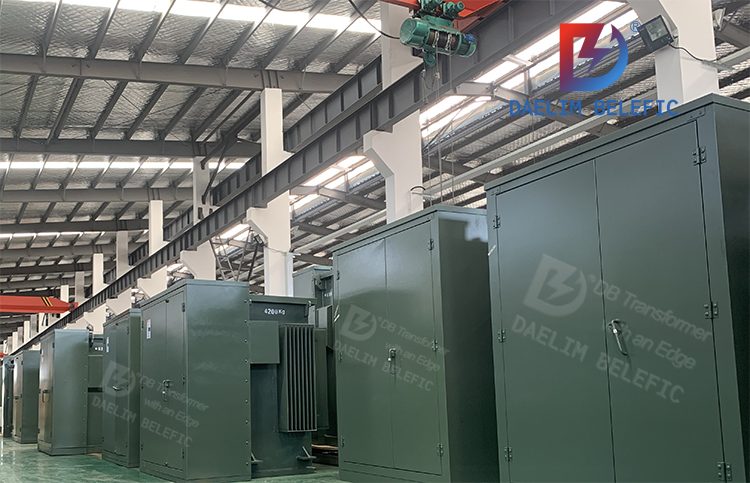
Instrument wiring minimum #14AWG Required
Upper Fill Valve Required
Drain Valve W/Sampling Device Required
Automatic Pressure Relief Device Qualitrol 208, 2 Form-C Contacts
Oil Sampler Required
Pressure Vacuum Gauge Qualitrol, 2 Form-C Contacts
Liquid Level Gauge Qualitrol 035, 2 Form-C Contacts
Liquid Temperature Gauge Qualitrol TRS6000S, 2 Form C Contacts, 4-20mA
Winding Temperature Gauge Qualitrol TRS6000S, 3 Form C Contacts, 4-20mA
Rapid Rise Relay with Seal-In Relay Qualitrol 900 / 909
Welded Main Tank Cover with Bolted Handhole Required
Hinged Doors Required
Interlocked Penta-Head Padlock Handle Required
Tank Ground Pads Required
Seismic Zone 3 and 4 Tank Anchoring Required
Parking Stands Not Applicable
Stainless Steel Nameplates, 2 - One Inside, One Outside Required
Compliance to C88-16 and C802.3 stamped on Nameplate. Required
All Warnings/Labels as per both C88-16 and C227.4 Required
Coating by C57.12.28 Required, Provide Details
Paint Colour ANSI 61 Gray
Overview of energy storage
Efficient and effective energy storage has become key to the world's electricity supply and energy infrastructure as industries look to renewable energy generation. Wind and solar are considered the most promising renewable energy sources, but they face issues with large-scale adoption due to their highly variable generation and mismatch between production and demand. The success of renewable energy sources will depend greatly on the efficiency of energy storage systems. Inadequate energy storage systems would not only result in expensive energy production but also make the transition toward renewable energy sources difficult, further exacerbating the issues related to climate change and global warming.
Energy Storage Technologies
To realize the widespread utilization of renewable energy, energy storage technology plays a vital role in coping with fluctuations in energy supply and demand. Energy storage systems ensure a stable and reliable power supply by storing excess energy generated during peak periods and releasing it during periods of low energy.
Additionally, these systems help balance the grid and increase the stability of the energy infrastructure. Industry leaders are investing heavily in research and development to improve existing technologies and develop new solutions. Examples of energy storage technologies include batteries, pumped hydro storage, chemical energy storage, compressed air energy storage, and thermal energy storage.
A. Brief overview of energy storage technologies
Renewable energy is becoming more in demand, leading to the rapid growth in the popularity of energy storage technology worldwide. These systems are crucial for updating the grid, regulating peak demand, and enabling the integration of renewable energy into the grid.
1. Battery Energy Storage Systems (BESS)
A battery energy storage system (BESS) is a technology that stores electrical energy in batteries. Battery storage is becoming increasingly popular due to the decreasing costs of lithium-ion batteries. BESS technology is highly flexible and can provide benefits such as frequency regulation, peak shaving, load shifting, and grid stabilization. BESSs are commonly used in conjunction with renewable energy sources such as wind and solar.
2. Pumped Hydroelectric Storage
Pumped hydro storage is a reliable technology that has been around for decades. It involves utilizing two reservoirs of varying heights to store and generate energy. When electricity demand is low, water is pumped from the lower reservoirs to the upper ones, where it is stored as potential energy. During peak demand periods, the water is released back into the lower reservoir, generating electricity as it flows. Pumped hydro storage is an efficient solution for long-term energy storage, capable of holding significant amounts of energy for several weeks.
3. Chemical Energy Storage
Chemical energy storage involves converting electrical energy into chemical energy and storing it in a chemical compound. Energy stored in chemical bonds can be retrieved and utilized in a variety of ways. One example of this is hydrogen fuel cells, which can utilize hydrogen stored through chemical energy storage to power electric vehicles or even buildings. Other examples of chemical energy storage include flow batteries and redox flow batteries.
4. Compressed Air Energy Storage (CAES)
Compressed air energy storage (CAES) uses compressed air stored in an underground reservoir. During periods of low demand, air is compressed and stored in underground reservoirs. When the grid demands more electricity, the compressed air is released, driving turbines to generate electricity. The technology has the potential to store large amounts of energy for weeks, making it ideal for long-term energy storage.
5. Thermal Energy Storage (TES)
Thermal energy storage (TES) involves storing thermal energy for later use. This technology is commonly used in heating and cooling applications, such as storing heat from solar panels during the day for use during the night. TES can also be used for power generation, where power from renewable energy sources such as solar energy can be stored as heat and used to generate electricity.
Role of Transformers in Energy Storage
A. Introduction to transformers in energy storage systems
Transformers in Energy Storage Systems play a crucial role in renewable energy generation and storage systems by changing the voltage and current levels. Transformers are an essential component in renewable energy generation systems as they help to increase the voltage from a low level to a high level for efficient energy transmission to the grid. This results in minimized transmission losses and costs, and improved energy efficiency. Moreover, transformers aid in regulating the high voltage output to cater to the diverse power needs of consumers. In renewable energy storage systems, transformers are crucial in reducing energy loss during energy storage conversion and optimizing energy efficiency and utilization.
Matching voltage levels and power quality
Matching voltage levels and power quality is the first function of transformers in energy storage systems. Since different components within the system may have different voltage or power needs, transformers are used to adjust the voltage levels to match the requirements. For example, if the energy storage system is powering homes or businesses located far from the source of the energy, a transformer might be used to step up the voltage to ensure that the energy can be transmitted over long distances. Similarly, if the power quality needs to be improved, a transformer might be used to regulate and stabilize the power signals.
Power conversion and distribution
Power conversion and distribution is another crucial function of transformers in energy storage systems. For the system to effectively store and distribute energy, it is often necessary to convert DC power to AC power. Transformers are used to achieve this conversion. Additionally, transformers are used to ensure that power is distributed evenly throughout the system and that any losses that may occur during distribution are minimized.
Integration with renewable energy sources
Integration with renewable energy sources is yet another area where transformers are indispensable. Since the supply of solar and wind power can vary depending on the weather conditions, energy storage systems can be used to store excess energy produced during times of high output, then release it during times of low output. In such cases, transformers are used to manage the flow of energy between the renewable energy source and the energy storage system.
Grid connection and synchronization
Transformers are key components in ensuring grid connection and synchronization. Before an energy storage system can be connected to the electrical grid, it must first be properly synchronized with the existing infrastructure. This is because the energy produced by the system must be in sync with the grid frequency. Transformers play an important role in this process by ensuring that energy flows smoothly between the system and the grid.
Transformer Solutions for Energy Storage
A. Design considerations for energy storage transformers
Power rating and capacity
Power rating and capacity are the first considerations to make when designing energy storage transformers. The transformer must be able to handle the power output of the system, and also provide a buffer for peak power demands. This requires careful calculations to determine the transformer's power rating and capacity that matches the energy storage system.
Efficiency and losses
Efficiency and losses are also important factors to consider in transformer design. Energy loss in transformers can have a major impact on system efficiency, so it's important to keep losses as low as possible. This requires careful selection of materials and construction techniques to reduce energy dissipation.
Cooling mechanisms and thermal management
Cooling mechanisms and thermal management are critical to transformer design, particularly for energy storage transformers, which operate under constantly varying loads. The transformer must be able to maintain consistent performance regardless of the temperature, so designers must select appropriate cooling mechanisms like liquid cooling, air cooling, or a combination of both. This ensures that the transformer remains at a safe temperature and provides optimal performance.
B. Transformer types for energy storage applications
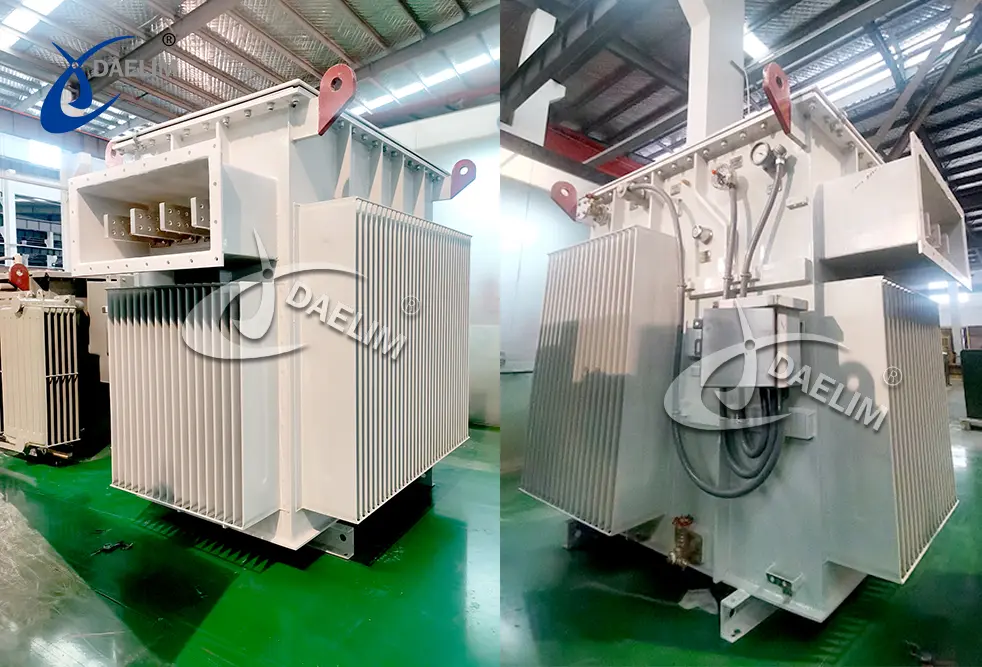
Small Substation Transformer
Small substation transformers are used for medium-voltage (MV) distribution in energy storage systems. They are typically installed in outdoor cabinets and switchgear enclosures and are used to transform the voltage levels to a level suitable for use in the local distribution network. Small substation transformers are suitable for medium-scale energy storage systems.
Learn more about Substation Transformer
Contact Daelim TransformerPad Mounted Transformer
Pad-mounted transformers (PMT) are widely used in energy storage systems for residential, commercial, and industrial applications. These transformers are installed on steel or concrete pads, and they are used to transform high-voltage power to lower voltage levels suitable for distribution. PMTs are compact, quiet, and require minimal maintenance. They are ideal for small-scale energy storage systems.
Get Price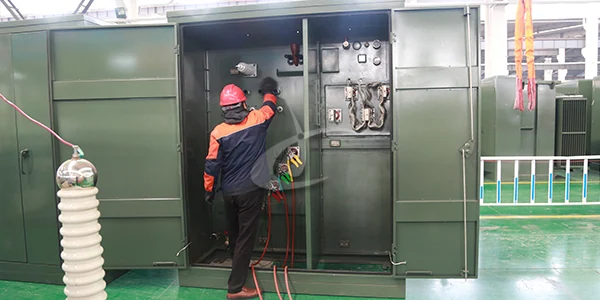
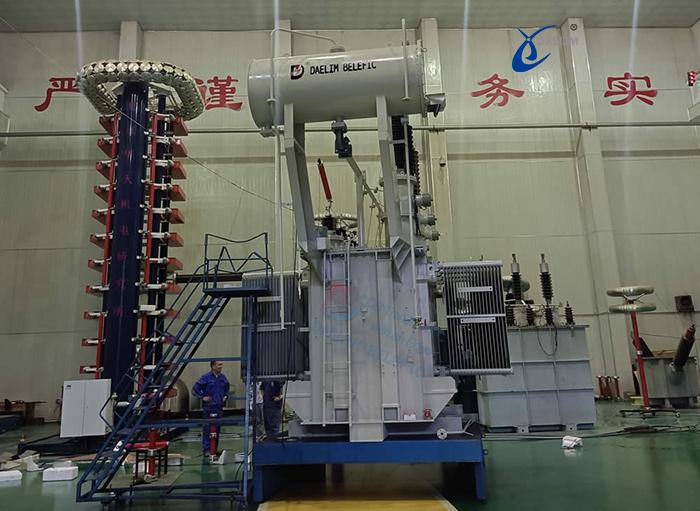
High voltage transformer(69kv and 110kv)
High Voltage (HV) transformers are used to transfer bulk power at high voltage levels across long distances. These transformers are typically used for energy storage systems that are installed at a utility-scale and are designed to store megawatts of power. They are generally used to transfer power to the grid or the transmission system.
Learn more about High Voltage Transformer
Send Inquiry NowService Transformer
In an energy storage station, a service transformer plays a crucial role in facilitating the connection, voltage transformation, and power distribution within the station. Here are the key roles of a service transformer in an energy storage station:
Power Distribution: The service transformer plays a crucial role in distributing power within the energy storage station. It receives power from the grid or other power sources and distributes it to various components of the storage system, such as battery banks, power conversion systems, control systems, and auxiliary equipment. The transformer ensures efficient and reliable power distribution throughout the station.
Voltage Regulation and Power Quality: Service transformers help regulate voltage levels and improve power quality within the energy storage station. They stabilize the voltage output from the storage system, compensate for fluctuations, and mitigate power-related issues like harmonics and voltage distortions. This ensures a stable and reliable power supply to connected loads and equipment.
Isolation and Protection: Service transformers provide electrical isolation between the energy storage system and the grid, as well as other connected equipment. They protect sensitive components from electrical disturbances, surges, and faults, ensuring the safety and integrity of the storage system. The transformer incorporates protective devices such as circuit breakers and surge arresters to safeguard against equipment damage and electrical hazards.
Power Flow Management: In an energy storage station, the service transformer assists in managing the flow of power between the grid, the storage system, and other connected devices. It helps regulate the power flow based on the charging or discharging requirements of the energy storage system, grid conditions, and system demands. This ensures efficient utilization of the stored energy and optimal grid integration.
Overall, a service transformer in an energy storage station is responsible for power distribution, voltage regulation, isolation, protection, and power flow management. It plays a vital role in enabling the efficient operation and integration of the energy storage system with the electrical grid and other components within the station.
Challenges and Solutions in Transformer Design for Energy Storage
A.Harmonic Distortion and Power Quality Issues
Harmonic distortion and power quality issues arise from non-linear loads such as power electronics and inverters. These issues can cause overheating, voltage instability, and unpredictable power transfer. To address this, transformer designers use materials with low core loss and low flux density to minimize hysteresis losses. Moreover, multi-stage filtering and effective grounding can also reduce the level of harmonic distortion and improve power quality.
B.Dynamic Loading and Cycling Requirements
Energy storage systems require transformers that can handle dynamic loading and cycling requirements. This is because energy storage systems usually charge and discharge rapidly, which can cause thermal and mechanical stress on the transformer. To overcome these challenges, designers use materials with high thermal conductivity and low thermal expansion coefficients. Additionally, transformer ratings and sizing must be optimized to match the dynamic load requirements of the energy storage system.
C.Voltage Regulation and Stability Considerations
Voltage regulation and stability are also crucial considerations in transformer design for energy storage systems. This is because transformers are responsible for stepping up or stepping down the voltage to match the requirements of the downstream loads. To address this, transformer designers use advanced voltage regulation control and protection mechanisms such as tap-changing and load-tap-changers. Moreover, innovative cooling systems such as liquid cooling can also enhance the voltage regulation and stability of the transformer.
D.Mitigating Transformer Losses and Maximizing Efficiency
Transformer losses such as copper loss, core loss, and winding loss can significantly reduce the efficiency of energy storage systems. To mitigate losses and maximize efficiency, transformer designers use materials with high conductivity and low resistance such as amorphous metal instead of traditional silicon steel. Moreover, innovative cooling systems such as forced or natural air can also reduce core loss and improve overall efficiency.
Conclusion
Through its experience in transformer solutions, Daelim can assist in the design and implementation of energy storage projects. By providing the appropriate transformers, Daelim can help increase the efficiency, reliability, and safety of energy storage systems. This is crucial when dealing with energy storage, which must be carefully managed to avoid any potential safety hazards.


